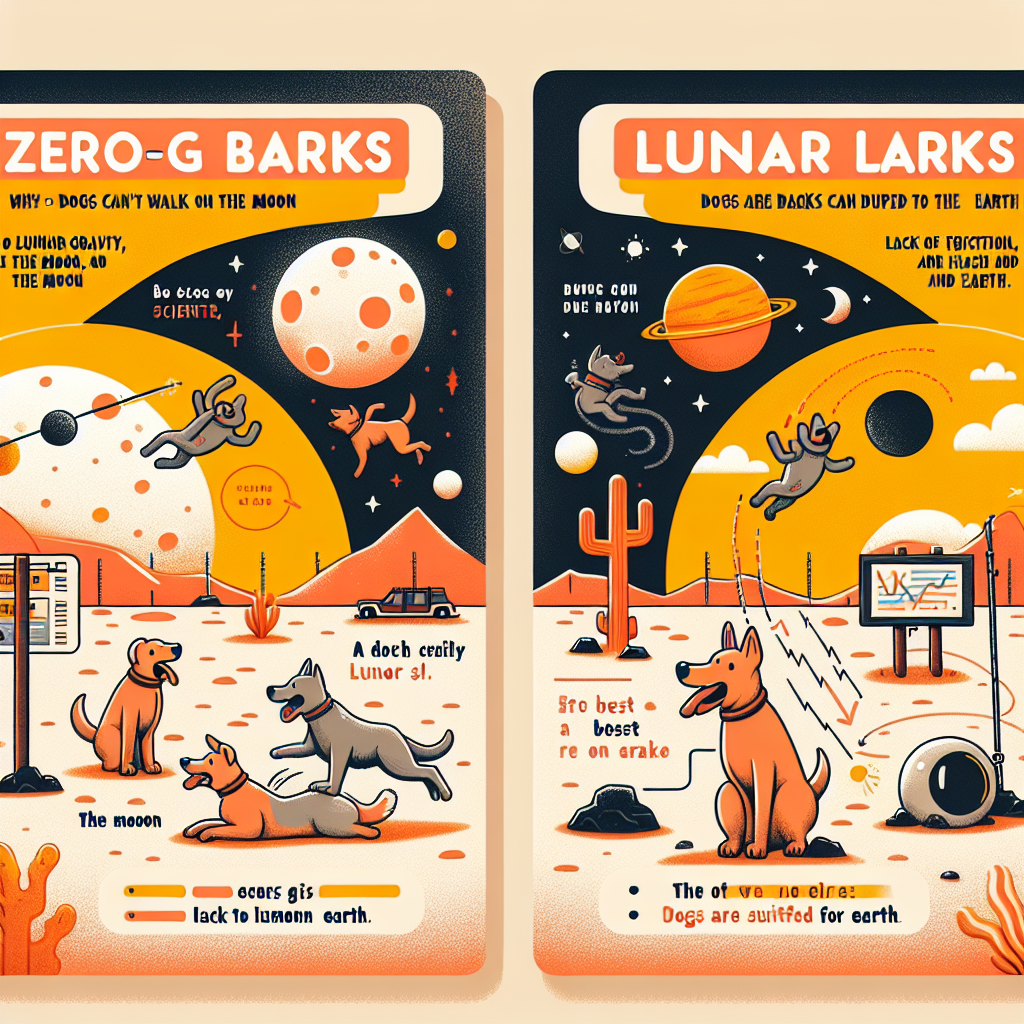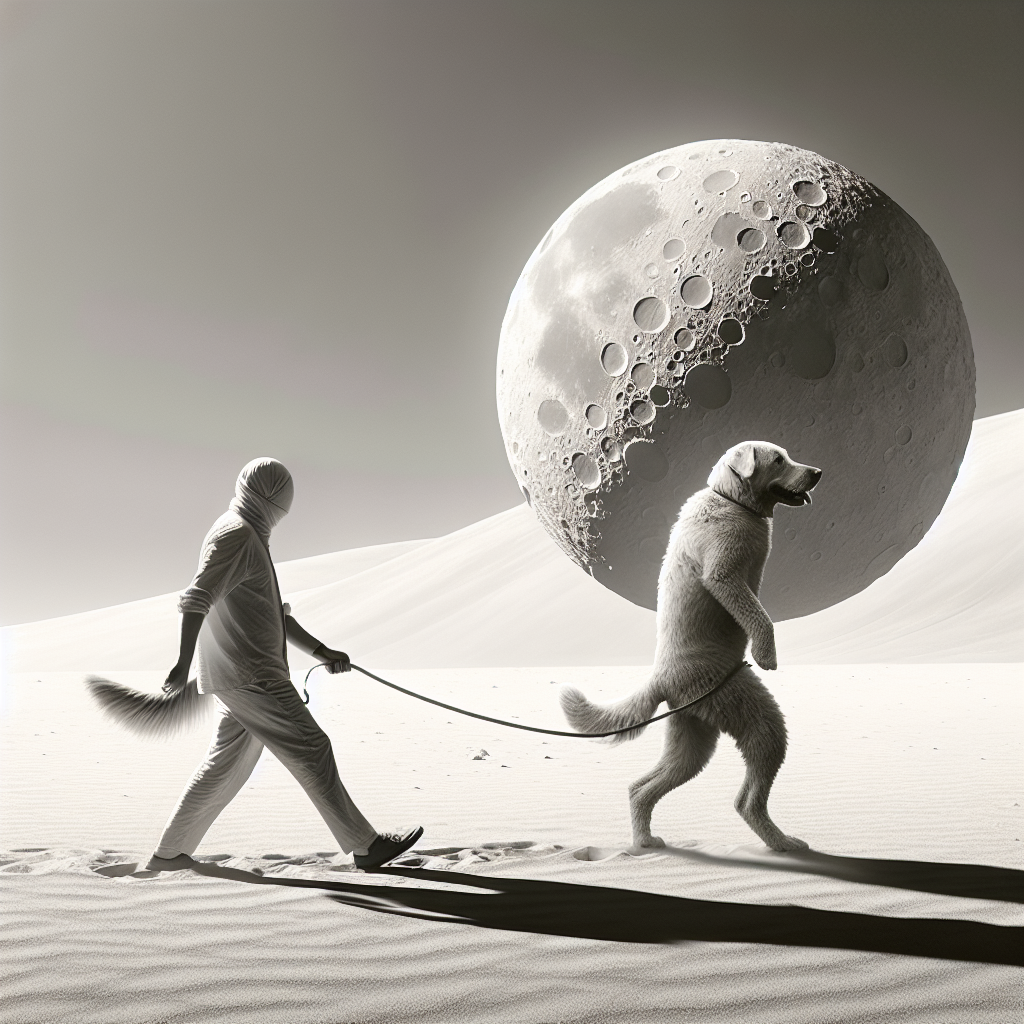Zero-G Barks and Lunar Larks: Why Fido's Moonwalk is Pure Science Fiction!

Hello, cosmic canine enthusiasts! Ever caught your pooch staring at the moon with a wistful gaze, as if dreaming of frolicking in lunar meadows? Well, strap in and hold onto your leashes, because we’re about to take a wild walkies through the science of why our four-legged friends can’t scamper on the silvery surface of the moon!
Gravity
First off, let’s talk about the moon’s gravity—or should I say, the lack thereof. You see, gravity is like the universe’s own leash, keeping everything from floating off into the great unknown. Earth’s gravity is like a firm, but fair tug, reminding your doggo that what goes up must come down—preferably not on your favorite vase.

Moon
The moon, on the other hand, is a bit of a lightweight, tipping the cosmic scales at about 1/6th the Earth’s mass. This means its gravitational pull is like a slack leash, allowing for some seriously impressive doggy acrobatics. Imagine your pupper weighing as much as a Chihuahua-sized loaf of bread, bounding around and accidentally performing triple backflips—talk about a new trick! But here’s the kicker: walking on the moon isn’t just about being light on your paws. It’s also about friction, or in lunar terms, the lack thereof. Friction is what keeps your dog from turning into a furry torpedo every time it chases after a ball on hardwood floors. Without it, your dog’s moonwalk would be less Michael Jackson and more Bambi on ice.
Velocity
Now, let’s not forget about escape velocity. That’s the speed needed to break free from a celestial body’s gravitational pull without falling back down. On Earth, it’s a blistering 11.2 kilometers per second—faster than any greyhound’s sprint. But on the moon, it’s a leisurely 2.38 kilometers per second. So, if your dog got a running start (and I mean a really good one), it could theoretically become the first interstellar frisbee retriever. Just make sure it doesn’t forget to come back!

Microgravity
And what about microgravity effects on living organisms? Well, in the low-gravity lunar lounge, your dog’s muscles and bones would have a howl of a time adapting. Without the constant pull of Earth’s gravity, they’d weaken faster than the resolve of someone trying to resist puppy eyes. That’s why astronauts exercise like crazy in space—to stop their bodies from turning into jelly. Your dog would need a space treadmill, and good luck getting Fido to stick to a workout routine.
Lastly, let’s not ignore the fact that the moon is as life-friendly as a vacuum-sealed bag of moon rocks. With no atmosphere, temperatures swing from “frozen hot dog” to “boiled beagle” in the blink of an eye. And without air, your dog’s bark would be forever lost in space—literally. Plus, those cosmic rays and micrometeorites would turn a game of fetch into a dangerous dodgeball match.
Conclusion
So, dear readers, while the idea of your dog leaving paw prints next to Neil Armstrong’s boot prints is a delightful daydream, the reality is that our beloved barkers are made for terra firma, not lunar landscapes. Let’s leave the moonwalking to the professionals and keep our tail-wagging adventurers safely snuggled up on Earth, where the gravity is just right, the atmosphere is breathable, and the squirrels are plentiful. Until next time, keep your dreams interstellar and your dogs grounded!